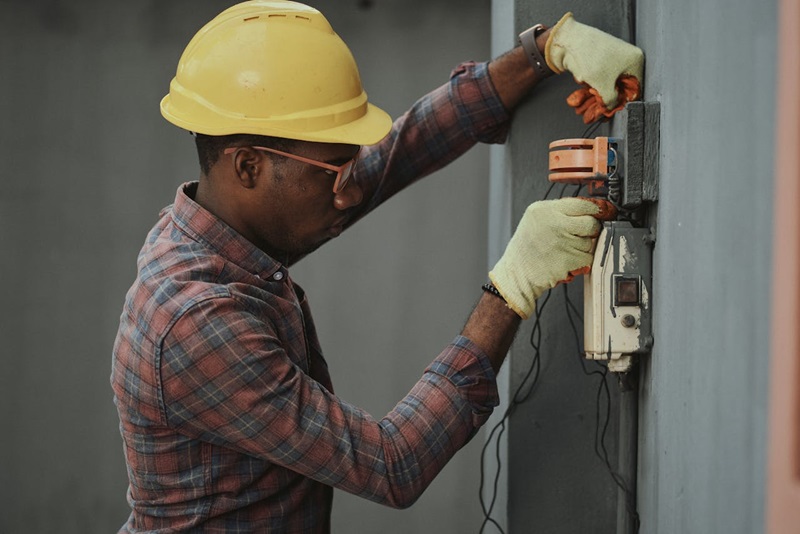Navigating the Highways and Byways of Automobile Electrical Repairs
Has your car ever refused to start, despite the abundance of fuel in the tank? Have perplexing lights flashed on your dashboard, their purpose as mysterious as ancient hieroglyphs? Or maybe you’ve endured the frustration of a window that won’t budge, no matter how insistently you press the button? If you can relate to these experiences, you’re not alone. These are common symptoms of electrical complications in cars, an elusive but increasingly prevalent issue in modern vehicles.

In this interconnected era where even our automobiles are part of the Internet of Things, understanding the intricate workings of your automobile’s electrical system may seem like deciphering alien technology. But take heart! While it might be intimidating, it’s not impossible. This article aims to illuminate the shadows, guide you through the maze, and help you better comprehend automobile electrical repairs.
So, buckle up and join us as we navigate the common challenges of the automobile electrical landscape. We will demystify the complexities, breaking down concepts and terminology into digestible nuggets of knowledge. By the end of our journey, you’ll be more informed, better prepared, and will spare yourself future bouts of head-scratching or wallet-draining encounters with your trusted mechanic.
Recognising the Symptoms (Why?)
Before we delve into solutions, it’s crucial to understand how to recognise the signs of an electrical issue in your car. Much like that unexpected rash might prompt a trip to the doctor, unanticipated automobile behaviours warrant attention too. Cars can’t speak, so they use symptoms to signal that something’s awry.
Perhaps you’ve experienced sluggish cranking on ignition or dimming headlights, especially when using another electrical component simultaneously. Maybe your car refuses to start some days or certain electrical functions cease to work sporadically.
Remember, the intermittent nature of these signs doesn’t mean there isn’t a problem. Ignoring these early symptoms can transform minor issues into major, costly repairs down the track.
Understanding these essential signs is the first step in preventing serious damage to your vehicle and ensuring a smooth and unfettered adventure on the open road.
The Voltage Vortex (What Happens?)
Understanding how a car’s electrical system works can feel like navigating a maze in the dark. However, knowing the impact of voltage on your car’s well-being is of significant importance.
Every function, from starting your car to powering the blinkers, relies on electrical systems working in harmony. A dip in voltage can cause these systems to falter, affecting their effectiveness. Conversely, excessive voltage can overload the system, resulting in short circuits.
By paying attention to voltage fluctuations, you can preempt problems and keep your car in good health.
Common Culprits (Who is Responsible?)
Knowing the usual culprits of electrical issues can help you diagnose problems more easily. From the battery, alternator, starter to the fuse box, any of these components can play the antagonist in your car’s electrical story.
Keeping an eye on these parts and their performance can save you precious time and resources. After all, a car is only as good as its weakest component.
Timing Is Everything (When Should I Act?)
Then comes the timing. Just like treating an injury, acting swiftly and promptly can drastically reduce the impact and ensure a quicker recovery. Allowing a problem to continue can lead to more serious issues; hence, timing is often the difference between a quick, inexpensive repair and a major, costlier one.
The Pros and Cons of DIY Repairs
DIY repairs can seem like a cost-effective solution, but it’s worth wrestling with the pros and cons before diving in.
DIY repairs can save you money, and the achievement of fixing it yourself is empowering. However, without the right knowledge or tools, you risk further damage or compromising safety.
Enlisting Professional Help (Why, When and How?)
At the end of the day, enlisting professional help for complex electrical repairs is often the best route.
A qualified mechanic is equipped with the much-needed expertise and tools to assess, diagnose, and rectify problems efficiently. Sure, it comes with a price tag, but the assurance of a job well done is priceless.
Conclusion
With a world veering towards self-driving electric cars, understanding the electrical components in our vehicles has never been more important. Remember, it’s the early recognition, timely intervention, and apt solutions that can save you from spiralling into the vortex of automobile electrical repairs.
Embarking on the DIY route is always an option, where set aside savings could even fund your next road trip. But remember, when in doubt, professional help is only a phone call away. Knowledge is power, and armed with the information from this guide, you’re now better prepared to handle the challenges of automotive electrical fixes. Safe driving!



